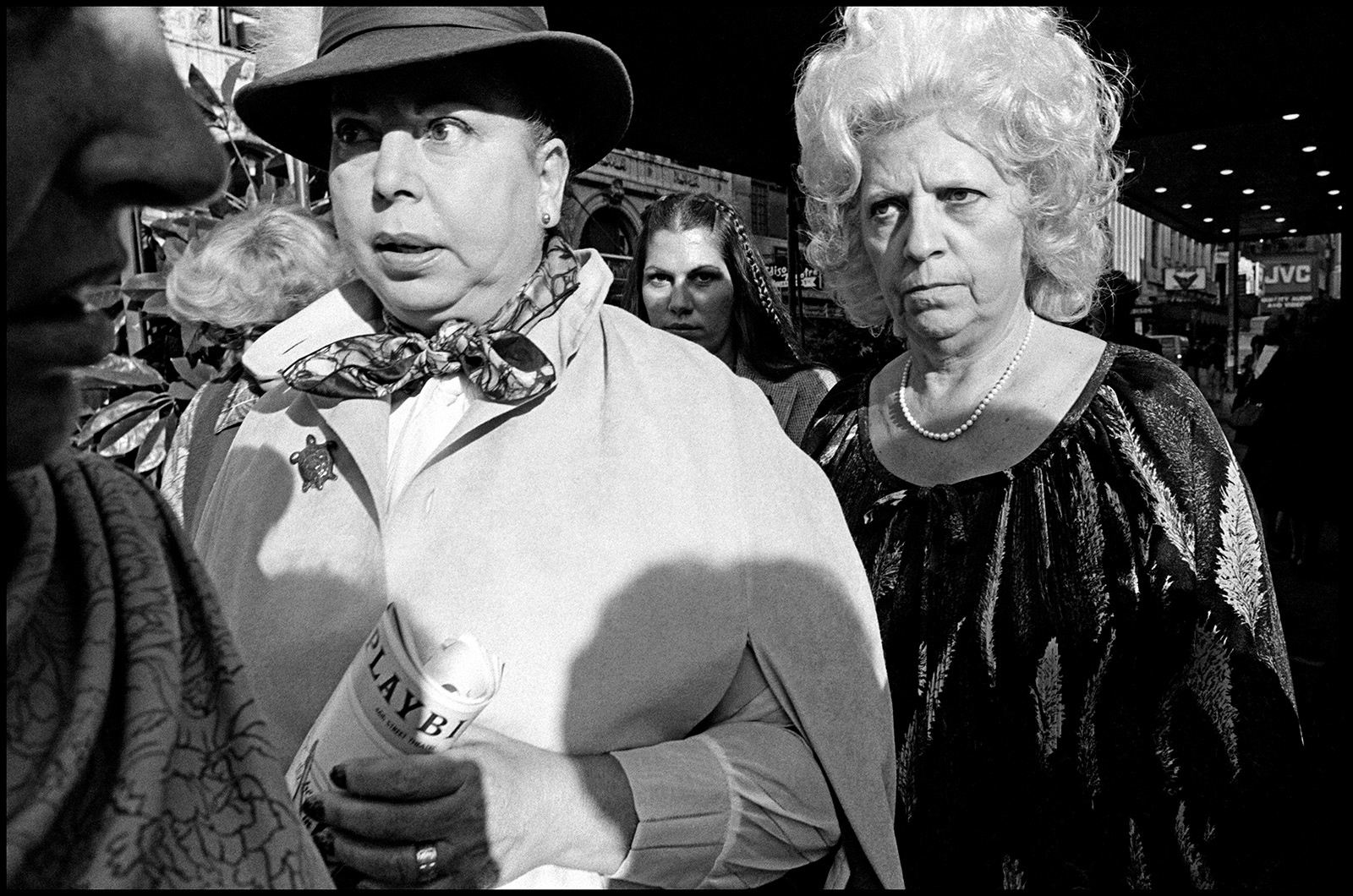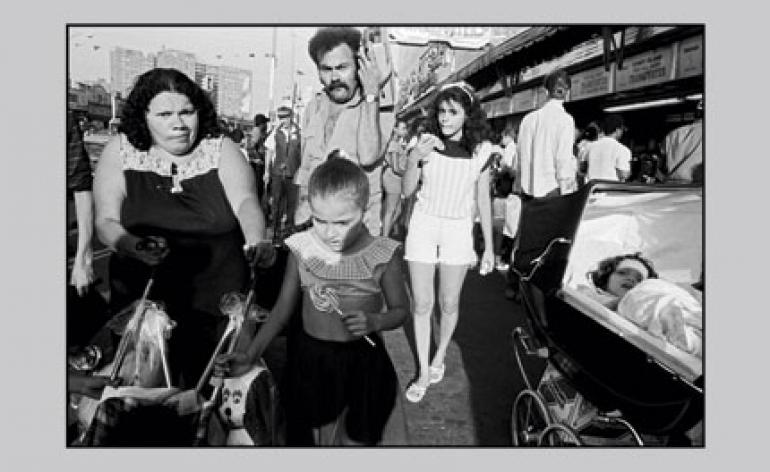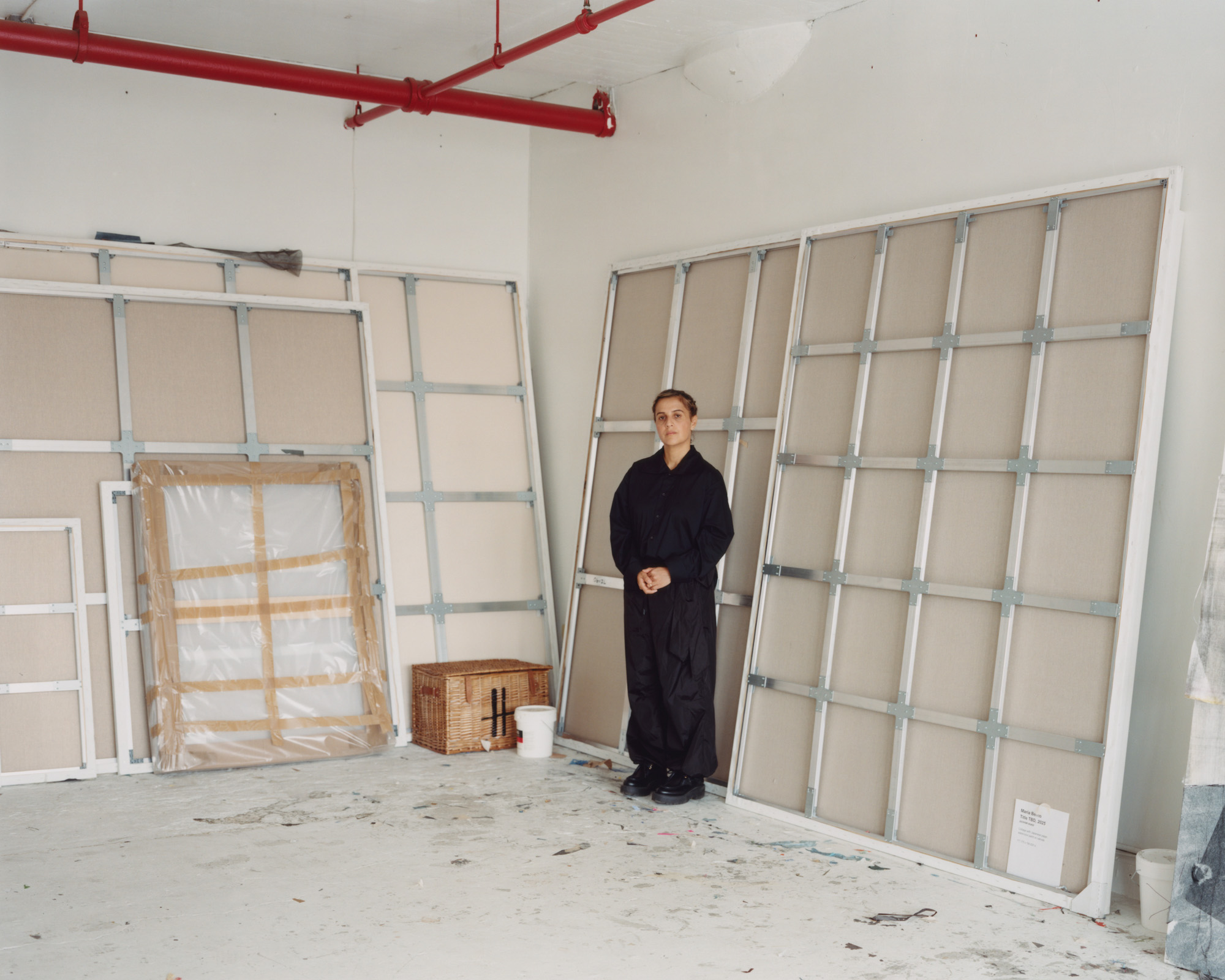Bruce Gilden on the art of street photography and his pursuit of good portraits

Bruce Gilden is talking of his own father, a ‘mafia-looking figure with pinky rings, thick hair, hats, big cigars’. His father was ‘a tough guy, a streetwise guy’ – a classic figure of the subterranean world of New York City.
Yet he recalls his teenage self as an uncertain and anxious presence. The only thing he had any confidence in was sports. He remembers watching wrestling on TV as a kid, and feeling sucked in by the aggression and physicality of it all. As a teenager, he’d spend his days playing basketball and baseball and hanging out in boxing gyms. ‘It was a reason to get out of the house,’ he says. ‘It was not very happy living at home with my parents.’
He dropped out of college and started taking photography classes after trying numerous courses – including acting. The first time he developed a photograph, he was hooked. ‘I had done something besides sports for myself, and it was incredible.’

USA. New York City. Fifth Avenue. 1984.
Gilden was 21. The year was 1967, and New York was the most international place in the world – a megacity of bizarre and striking characters. He talks about the ‘stress and anxiety’ of the city sidewalk as if it’s an addiction. On an almost daily basis, he would take his camera onto the sidewalks. ‘And you never knew what was going to come around the next corner. And you don’t have to talk to anyone,’ he says. ‘You just take your camera and go out on the street.
He decided to stop walking the streets of New York four years ago – and has since focused on many other long-term essays including on ‘prostitutes’ in Miami, for a new project published this year by London’s Brown Editions titled Only God Can Judge Me. Until then, New York, he says, ‘was my lifetime project’.
Although he’s now a revered name and a senior member of Magnum Photos, Gilden didn’t always get a lot of attention from the photography scene. He wasn’t motivated by glitzy commissions or solo exhibitions or seeing his name in magazines. He shot on the streets for reasons entirely his own. It was, he says, a compulsion. ‘You have to try. Even if you’re not feeling well, you’re trudging. It is hard. But you continue to do it.’
RELATED STORY

In that time, Gilden developed a signature. A Bruce Gilden photograph is unmistakeable. Love them or hate them – and he’s a photographer with his fair share of detractors – a Gilden photograph could never be anything but a Gilden photograph. With the use of a flash, Gilden has become renowned for the way he pushes the limits of the frame with his sheer proximity to his subjects. ‘I’m known for taking pictures very close,’ he says. ‘And the older I get, the closer I get.’
His success, he says, lies in little more than the doggedness of his pursuit of good portraits, come what may. ‘I’m definitely a bulldog,’ he says. ‘I think, to be a good photographer, you don’t have to be a genius but you have to have an aptitude and a degree of talent. You have to persevere. You have to stay the course.’
‘I wanted to get back at my father,’ Gilden says. ‘Because he was always negative towards me. He always said negative things. So I’m always proving to myself I can do this. Maybe that's one of the reasons why I photograph people.’
Magnum Photos has launched an online education platform, with ‘The Art of Street Photography’. Bruce Gilden is among seven of the agency’s renowned photographers who have contributed their valuable insights and experience to the course, which comprises ten in-depth lessons to help hone photography skills through location demonstrations and candid interviews. See an exclusive excerpt of Gilden’s case study from the series below and learn more about the course here.

USA. New York City. Man walking in Wall Street area. September 18th, 2001.

1984. USA. New York City.
INFORMATION
For more information, visit the Magnum Photos website
Receive our daily digest of inspiration, escapism and design stories from around the world direct to your inbox.
Tom Seymour is an award-winning journalist, lecturer, strategist and curator. Before pursuing his freelance career, he was Senior Editor for CHANEL Arts & Culture. He has also worked at The Art Newspaper, University of the Arts London and the British Journal of Photography and i-D. He has published in print for The Guardian, The Observer, The New York Times, The Financial Times and Telegraph among others. He won Writer of the Year in 2020 and Specialist Writer of the Year in 2019 and 2021 at the PPA Awards for his work with The Royal Photographic Society. In 2017, Tom worked with Sian Davey to co-create Together, an amalgam of photography and writing which exhibited at London’s National Portrait Gallery.
-
 Dublin-based designer Cara Campos turns abandoned bicycles into sleekly minimal furniture pieces
Dublin-based designer Cara Campos turns abandoned bicycles into sleekly minimal furniture piecesWallpaper* Future Icons: Saudi-raised Irish/French designer Cara Campos' creative approach is rooted in reuse, construction and the lives of objects
-
 A Greek brutalist gem wows with its reimagining in Athens
A Greek brutalist gem wows with its reimagining in AthensAthens architect Georges Batzios squares up to the renovation of a landmark Greek brutalist office block in the capital's suburbs; we revisit a story from the Wallpaper* archive
-
 Modernism for sale: a Norman Jaffe-designed icon on Shelter Island hits the market
Modernism for sale: a Norman Jaffe-designed icon on Shelter Island hits the marketThe Osofsky House epitomised the glamour of high-end 70s modernism on Long Island. Now updated and refurbished, it’s back on the market for the first time in over two decades
-
 Out of office: The Wallpaper* editors’ picks of the week
Out of office: The Wallpaper* editors’ picks of the week'Tis the season for eating and drinking, and the Wallpaper* team embraced it wholeheartedly this week. Elsewhere: the best spot in Milan for clothing repairs and outdoor swimming in December
-
 Nadia Lee Cohen distils a distant American memory into an unflinching new photo book
Nadia Lee Cohen distils a distant American memory into an unflinching new photo book‘Holy Ohio’ documents the British photographer and filmmaker’s personal journey as she reconnects with distant family and her earliest American memories
-
 Out of office: The Wallpaper* editors’ picks of the week
Out of office: The Wallpaper* editors’ picks of the weekIt’s been a week of escapism: daydreams of Ghana sparked by lively local projects, glimpses of Tokyo on nostalgic film rolls, and a charming foray into the heart of Christmas as the festive season kicks off in earnest
-
 Ed Ruscha’s foray into chocolate is sweet, smart and very American
Ed Ruscha’s foray into chocolate is sweet, smart and very AmericanArt and chocolate combine deliciously in ‘Made in California’, a project from the artist with andSons Chocolatiers
-
 Inside the work of photographer Seydou Keïta, who captured portraits across West Africa
Inside the work of photographer Seydou Keïta, who captured portraits across West Africa‘Seydou Keïta: A Tactile Lens’, an exhibition at the Brooklyn Museum, New York, celebrates the 20th-century photographer
-
 Out of office: The Wallpaper* editors’ picks of the week
Out of office: The Wallpaper* editors’ picks of the weekFrom sumo wrestling to Singaporean fare, medieval manuscripts to magnetic exhibitions, the Wallpaper* team have traversed the length and breadth of culture in the capital this week
-
 María Berrío creates fantastical worlds from Japanese-paper collages in New York
María Berrío creates fantastical worlds from Japanese-paper collages in New YorkNew York-based Colombian artist María Berrío explores a love of folklore and myth in delicate and colourful works on paper
-
 Out of office: the Wallpaper* editors’ picks of the week
Out of office: the Wallpaper* editors’ picks of the weekAs we approach Frieze, our editors have been trawling the capital's galleries. Elsewhere: a 'Wineglass' marathon, a must-see film, and a visit to a science museum